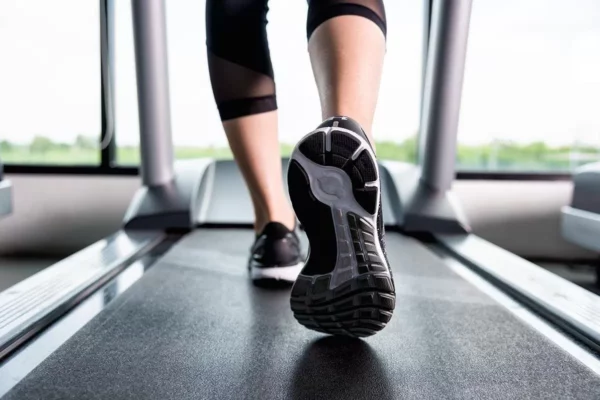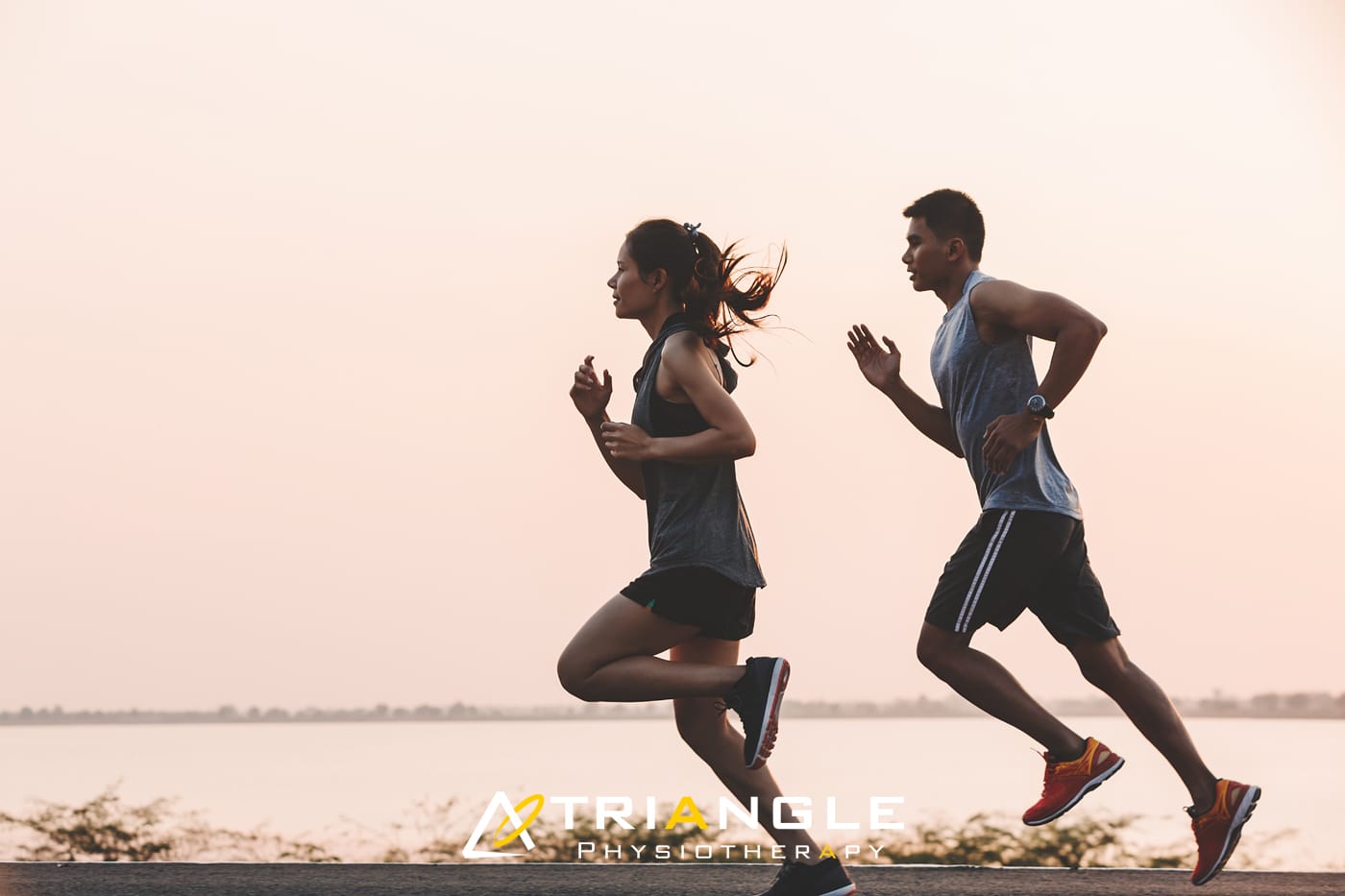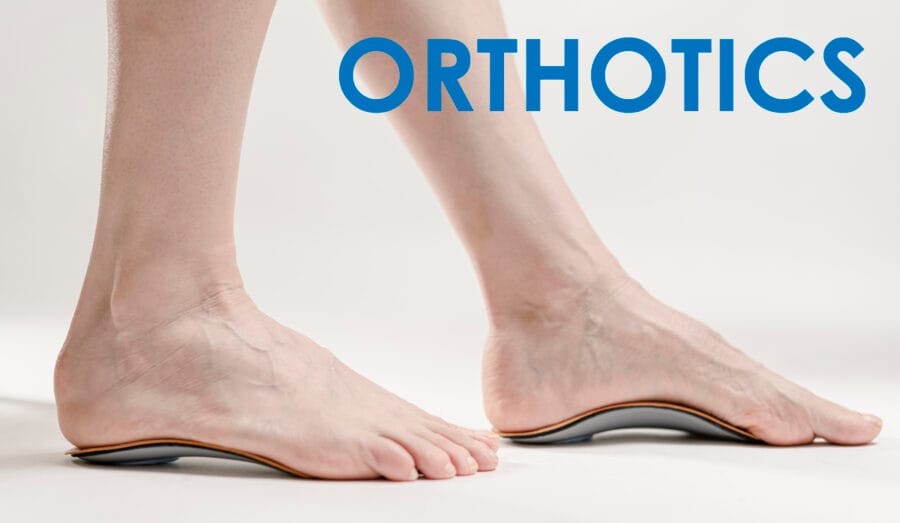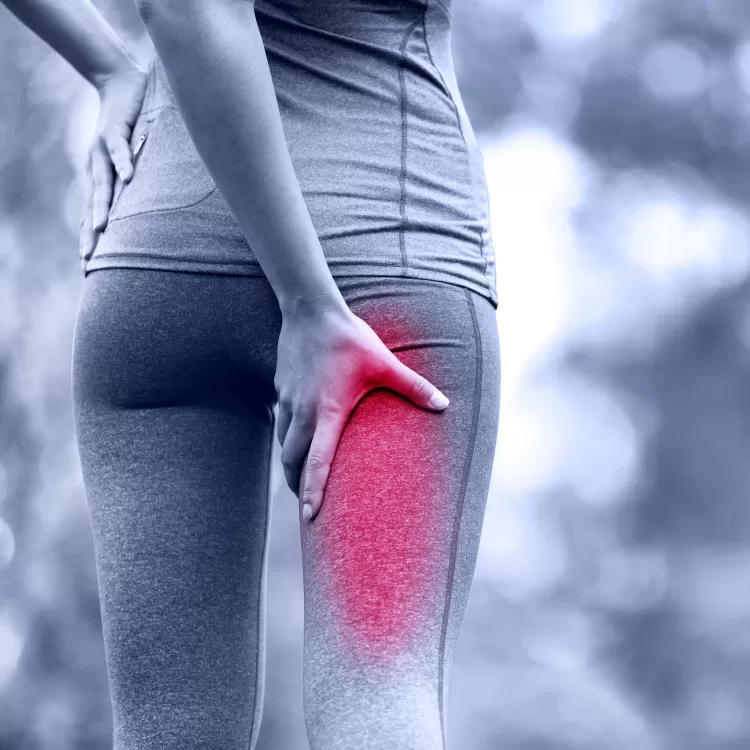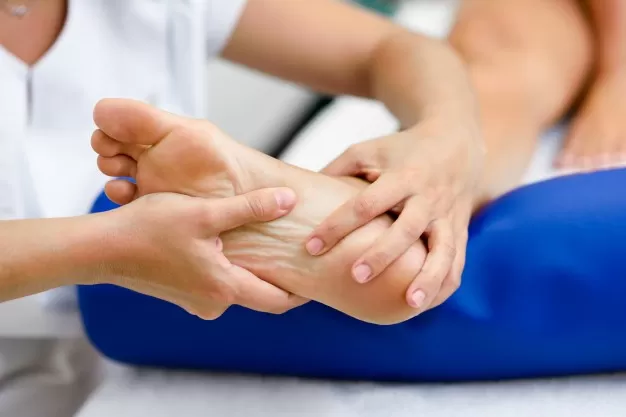Experiencing upper back pain while running can be both frustrating and concerning. While many runners focus on lower body injuries, upper back pain is a common issue that can affect performance and enjoyment. Understanding the causes of this discomfort and exploring effective solutions is essential for maintaining a healthy running routine.
At Triangle Physiotherapy, our team of physiotherapists have the expertise and education to help you develop a plan to ensure your runs are done right!
Understanding Upper Back Pain
Upper back pain during running can arise from various factors, including muscle strain, poor posture, or underlying conditions. The upper back, or thoracic region, comprises the spine and surrounding muscles, which play a crucial role in maintaining proper running form. If any part of this system is compromised, it can lead to discomfort and pain.
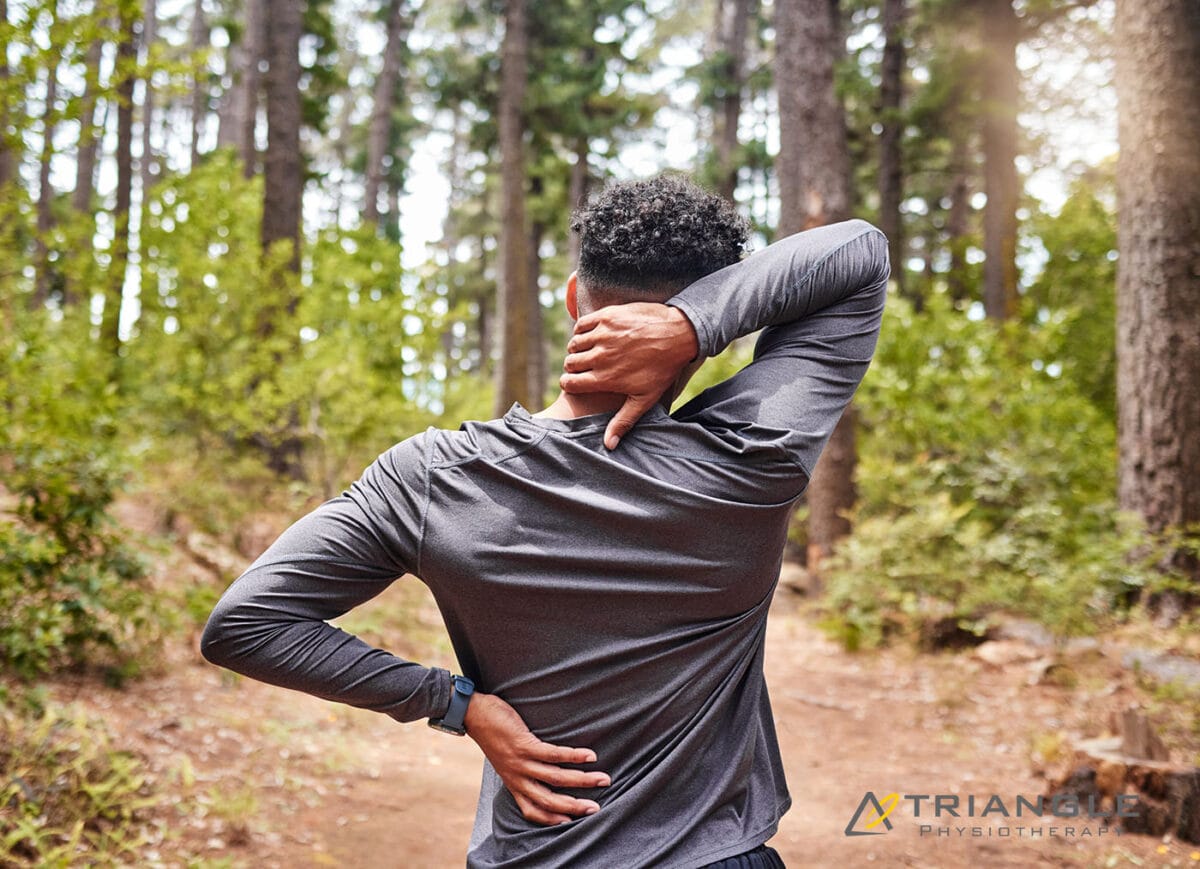
Common Causes of Upper Back Pain While Running
- Poor Posture: Runners who hunch their shoulders or lean forward excessively may put strain on their upper back muscles, leading to pain. Maintaining a neutral spine and relaxed shoulders is essential for proper running form.
- Muscle Imbalance: Weakness in the core or upper back muscles can result in poor stabilization during running. This imbalance may lead to overcompensation by other muscles, causing pain.
- Overuse: Increasing running distance or intensity too quickly can lead to muscle fatigue and strain in the upper back. It’s crucial to allow adequate recovery time between runs.
- Tension and Stress: Mental stress can lead to physical tension in the upper body, exacerbating discomfort during exercise. Runners may unconsciously tighten their shoulders and upper back while running, contributing to pain.
How can Physiotherapy help?
Physiotherapy can play a significant role in addressing upper back pain related to running. A physiotherapist will conduct a thorough assessment to identify the underlying causes of your discomfort. Based on this evaluation, they will develop a personalized treatment plan that may include:
- Postural Assessment: Evaluating your running posture and identifying areas for improvement can help alleviate strain on the upper back.
- Strengthening Exercises: Targeted exercises to strengthen the upper back and core muscles can improve stability and support proper running form.
- Stretching and Flexibility Training: Incorporating stretches for the upper back and shoulders can relieve tension and enhance flexibility.
- IMS: Intra muscular Stimulation is an effective tool to trace and treat the root cause, reducing recurrence.
- Education: Learning about proper running techniques and body mechanics can help prevent further injuries.
Tips for Reducing Upper Back Pain While Running
- Warm-Up Properly: Engage in a dynamic warm-up to prepare your muscles for running. Focus on movements that activate the upper back and shoulders.
- Focus on Form: Pay attention to your running posture. Keep your shoulders relaxed and your chest open, and avoid hunching over while you run.
- Strength Train: Incorporate strength training exercises targeting the upper back and core into your fitness routine to build muscle balance and support.
- Gradually Increase Intensity: Avoid sudden increases in running distance or intensity. Follow a structured training plan to prevent overuse injuries.
- Manage Stress: Practice stress-reduction techniques, such as mindfulness or yoga, to help relieve physical tension in the upper body.
FAQs
Why does my upper back hurt when I run?
Upper back pain while running can result from poor posture, muscle imbalances, overuse, or tension. Identifying the specific cause is essential for effective treatment.
What should I expect during my first visit to Triangle Physiotherapy?
During your initial visit, a physiotherapist will assess your posture, movement patterns, and any contributing factors to your pain. They will develop a personalized treatment plan to address your needs.
How many sessions will I need?
The number of sessions varies based on the severity of your pain and your response to treatment. Your physiotherapist will provide an estimate after your assessment.
Do I need a referral to see a physiotherapist?
No, you do not need a referral to access physiotherapy services. You can book an appointment directly, unless needed by insurance for billing purposes.
How soon can I expect to feel better?
Many individuals notice improvements within a few sessions, but the timeline can vary depending on individual circumstances and the nature of the pain.
How can I prevent upper back pain while running?
Focus on maintaining good posture, strengthening your upper back and core, warming up properly, and gradually increasing your running intensity to help prevent pain.
Call us today to get help with any running related back pain issues!
Upper back pain during running is a common issue that can hinder performance and enjoyment. By understanding the underlying causes and implementing effective strategies, you can alleviate discomfort and enhance your running experience. Book an appointment with us to get help!
Whether you’re a seasoned marathon runner or a casual jogger, incorporating strength and flexibility exercises into your training routine is crucial for improving performance, preventing injuries and enhancing overall strength and endurance. As a runner, you rely on your muscles and joints to propel you forward mile after mile, making it essential to maintain balance, strength, and mobility throughout your body. To help you reach your running goals and stay injury-free, we’ve compiled a list of the top 10 best exercises for runners and put them in the following categories:
Strength-building and injury-prevention exercises
Strength Training
Strength training is crucial for runners as it helps improve muscle strength and endurance, enhances running capacity, and reduces the risk of injury. These exercises target major muscle groups, including squats, lunges, deadlifts, calf raises, and core exercises such as planks and bridges.
Hip Strengthening Exercises
Strong hips are essential for maintaining proper running form and preventing injuries such as hip raises, clamshells, lateral leg raises, and hip abduction/adduction exercises.

Dynamic Warm-Up Exercises
Dynamic warm-up exercises for runners help increase blood flow, improve flexibility, and prepare the muscles for running. These include movements such as leg swings, high knees, butt kicks, lunges with a twist, and leg circles.
Plyometric Exercises
Plyometric exercises help develop power and explosive strength, which can improve running speed and efficiency like box jumps, jump squats, bounding, and skipping.

Balance and Stability Exercises
Improving balance and stability can enhance running efficiency and reduce the risk of falls and injuries with exercises like single-leg squats and stability ball exercises.
Flexibility and Mobility Work
Maintaining good flexibility and mobility is important for preventing muscle tightness and reducing the risk of injury with stretching exercises for major muscle groups such as leg swings and hip circles.
Cross-Training
Cross-training activities such as cycling, swimming, and yoga can complement running by providing low-impact cardio, and targeting different muscle groups.
Recovery Exercises
Include exercises focused on recovery, such as foam rolling and gentle stretching, to help alleviate muscle soreness and promote faster recovery between runs.
Injury Prevention Exercises
It is important to pay attention to areas prone to injury for runners, such as the IT band, Achilles tendon, and shin muscles. Runners should Perform exercises specifically targeting these areas, such as IT band stretches, calf raises, and shin strengthening exercises.
Postural Exercises
Maintaining proper posture while running is important for efficiency and injury prevention. This means Incorporating exercises that target postural muscles, including rows, shoulder blade squeezes, and chest stretches.
Recommended Exercises For Runners
- Squats: Squats are a powerhouse, compound exercise for runners, targeting the quadriceps, hamstrings, glutes, and core muscles. By strengthening these muscles, squats improve running efficiency, power, and stability, helping you maintain proper form and reduce the risk of injury.
- Lunges: Lunges are excellent for building lower body strength and stability, particularly in the quadriceps, hamstrings, glutes, and calves. They also help improve balance and coordination, essential for navigating uneven terrain during runs.
- Planks: Planks are a staple core exercise that helps strengthen the entire core, including the abdominals, obliques, and lower back muscles. A strong core is essential for maintaining proper running posture and stability, reducing the risk of lower back pain and other injuries.
- Hip Flexor Stretch: Runners often have tight hip flexors due to the repetitive motion of running. Hip flexor stretches help alleviate tightness and improve hip mobility, allowing for a more fluid and efficient running stride.
- Glute Bridges: Glute bridges target the gluteal muscles, which play a crucial role in running propulsion and stability. Strengthening the glutes helps improve running power and reduces the risk of common injuries like IT band syndrome and knee pain.
- Calf Raises: Calf raises strengthen the calf muscles, which are heavily involved in the push-off phase of running. Strong calves help generate power and speed while reducing the risk of calf strains and Achilles tendon injuries.
- Single-Leg Deadlifts: Single-leg deadlifts are excellent for improving balance, stability, and hamstring strength. They also help correct muscle imbalances between the left and right legs, reducing the risk of overuse injuries.
- Side Leg Raises: Side leg raises target the hip abductor muscles, which are essential for stabilizing the pelvis during running. Strengthening these muscles helps prevent knee valgus (inward collapse) and IT band syndrome.
- Back Extensions: Back extensions strengthen the lower back muscles, which are crucial for maintaining proper posture and spinal alignment during running. A strong lower back helps reduce the risk of back pain and improves running efficiency.
- Foam Rolling: Foam rolling is an effective way to release tight muscles and fascia, improve blood flow, and reduce muscle soreness after running. Incorporating foam rolling into your routine can help prevent injuries and improve overall recovery.
By Incorporating these top 10 best exercises for runners into your training routine, you can enhance your running performance, prevent injuries, and improve overall strength, flexibility, and endurance. Remember to start slow, listen to your body, focus on proper form, and gradually increase intensity and volume as your strength and endurance improve. Consult with a Physiotherapist or ask for GAIT Analysis if you have any concerns or specific training goals.
Happy running!
How do I book an appointment with a physiotherapist near me?
Click HERE to book an appointment with a physiotherapist or chiropractor at one of our eight locations.
- Physiotherapy Etobicoke – Triangle Physiotherapy Etobicoke
- Oakville Physiotherapy Clinic – Triangle Physiotherapy Oakville
- Physiotherapy North York – Triangle Physiotherapy North York
- Mississauga Physiotherapy Clinics – Triangle Physiotherapy Mississauga
- Downtown Physiotherapy Clinics – Triangle Physiotherapy King West
- Uptown Physiotherapy Clinics – Triangle Physiotherapy Lawrence Park
- Physiotherapy Clinic Downtown Toronto – Triangle Physiotherapy Queens Quay
- Physiotherapy Clinics Mississauga – Triangle Physiotherapy Erin Mills
Incorporating the right exercises into your routine can help improve your running performance and prevent injuries. If you’re looking for professional support, consider physiotherapy in Etobicoke, Oakville, North York, Toronto, Lawrence Park, Queens Quay, Erin Mills, Mississauga, or Liberty Village. Expert physiotherapists in these locations can create tailored exercise programs to enhance your strength, flexibility, and endurance as a runner.
With the arrival of spring, many runners are eager to hit the pavement and embrace the revitalizing outdoors. Whether you’re a seasoned runner or just starting out, improving your running form can enhance your performance and reduce the risk of injuries. Read on for some information on elevating your running form this spring.
What is the running gait cycle?
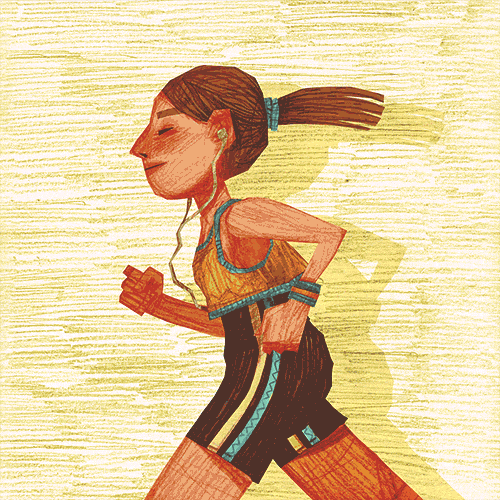
The running gait cycle refers to the sequence of movements that occur during each step while running. It consists of two main phases: the stance phase and the swing phase.
Stance Phase: This phase begins when the foot makes contact with the ground and ends when it lifts off again.
Swing Phase: This phase involves the leg swinging forward in preparation for the next step.
What are the running gait types?
There are generally three main types of running gaits:
- Neutral Pronation: This is considered the ideal gait pattern where the foot rolls slightly inward upon landing, distributing the impact evenly across the foot.
- Overpronation: In this gait type, the foot rolls excessively inward upon landing, causing the arch to collapse and the ankle to twist.
- Supination (Underpronation): Supination occurs when the foot rolls outward upon landing, placing excessive stress on the outer edge of the foot.
Runners need to understand their gait type, as it can affect their choice of running shoes and injury prevention strategies. Undergoing a gait analysis with a physiotherapist can provide valuable insights into one’s running gait and help in selecting appropriate footwear and training techniques. Additionally, strengthening exercises, stretching routines, and proper running form can also play a significant role in optimizing performance and reducing the risk of injuries, regardless of one’s gait type.
Why should I get a running gait analysis?
Getting a running gait analysis can be beneficial for several reasons:
- Injury Prevention
- Optimal Shoe Selection
- Performance Enhancement
- Customized Training Plans
- Overall Health and Wellness
How do gait analysis and running assessment work?
Your physiotherapist will have you run either on a treadmill or on the ground. While you are running, physiotherapist will record you from different angles.
During the observation, the physiotherapist will identify the following:
- Your step and stride length
- Pronation
- Cadence
- Point of contact
- Swing time
- Foot and hip angle
More detailed observations may include your force, speed and weight distribution while running.
Can I benefit from a gait analysis and running assessment?
Absolutely, you can benefit significantly from a gait analysis and running assessment, regardless of your level of experience or proficiency in running. Here’s how:
- Preventing Injuries
- Optimizing Performance
- Selecting the Right Footwear
- Tailored Training Plans
- Promoting Long-Term Health
How do I book an appointment with a Physiotherapist near me?
Click HERE to book an appointment with a physiotherapist or chiropractor at one of our eight locations.
- Physiotherapy Etobicoke – Triangle Physiotherapy Etobicoke
- Oakville Physiotherapy Clinic – Triangle Physiotherapy Oakville
- Physiotherapy North York – Triangle Physiotherapy North York
- Mississauga Physiotherapy Clinics – Triangle Physiotherapy Mississauga
- Downtown Physiotherapy Clinics – Triangle Physiotherapy King West
- Uptown Physiotherapy Clinics – Triangle Physiotherapy Lawrence Park
- Physiotherapy Clinic Downtown Toronto – Triangle Physiotherapy Queens Quay
- Physiotherapy Clinics Mississauga – Triangle Physiotherapy Erin Mills
Improving your running form can help prevent injuries and enhance performance. For expert guidance on running techniques and injury prevention, consider physiotherapy in Etobicoke, Oakville, North York, Toronto, Lawrence Park, Queens Quay, Erin Mills, Mississauga, or Liberty Village. Skilled physiotherapists in these locations can provide tailored advice and exercises to help you run better and stay injury-free.
We’ve all heard how good running can be for you. Running helps to lose weight, prevent disease, lower stress, strengthen joints, manage blood pressure… the list goes on and on. But there’s a surprising problem you may be experiencing if you’re a long-distance runner. It’s called leaky gut. I know it sounds gross, but if you’re a runner then it’s something to keep in mind. How do you know if you have a leaky gut? Read on to find out common symptoms and how to treat them.
What is a leaky gut, anyway?
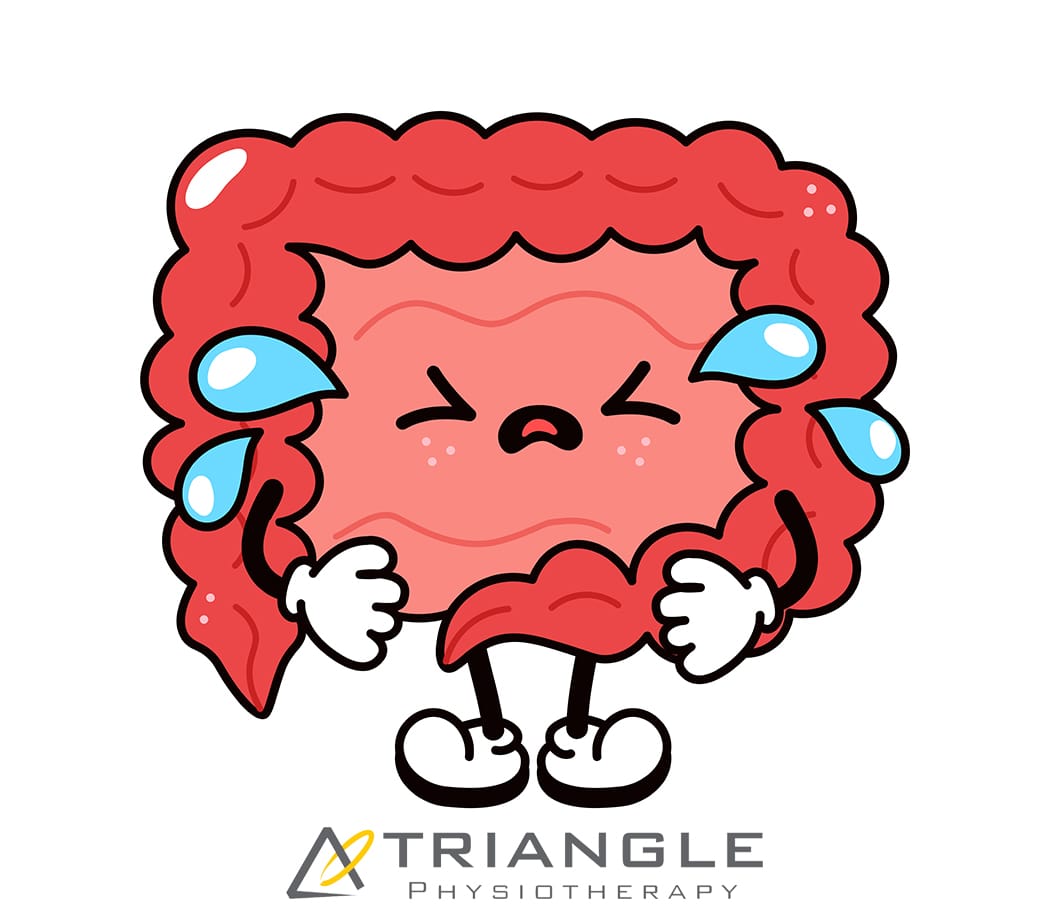
Leaky gut, also known as intestinal permeability, is a dysfunction in the lining of our intestine. Our intestinal walls are only one cell layer thick. Their job is to absorb nutrients and prevent bacteria from getting into our bloodstream. When the cells of the gut lining start to separate and let bacteria enter the bloodstream, we get what we call leaky gut. This can lead to all kinds of health issues, including:
- allergies
- asthma
- autoimmune disease
- eczema
- psoriasis
- rheumatoid arthritis
- food sensitivities
- irritable bowel syndrome
- Crohn’s disease
- ulcerative colitis
- thyroid problems
- acne
- nutrient deficiencies
- depression and other mood disorders
How does running lead to leaky gut?
It’s not just running that can lead to leaky gut. Powerlifters and people who do cross-fit are at risk, too. The same goes for anyone who does vigorous strength training or heavy exercise. The gut lining becomes more permeable due to the amount of stress put on your body by these types of activities. High physical stress leads to higher metabolic demands. Endurance sports do appear to have the most profound effect on leaky gut though, which is why you might be more concerned if you’re a marathon runner, cyclist, or triathlete.
When you exercise, plant-derived carbohydrates are digested and fermented by the gut. This can create some harmful byproducts that play a role in creating leaks in your gut. Once you have a leaky gut, toxins are more easily able to cross from your intestines into your bloodstream.
Endurance exercise can also increase our secretion of pro-inflammatory cytokines. This means that more inflammation is happening in the gut, which can throw off the balance of good bacteria versus bad bacteria in the intestines.
If you know me, you know I don’t like talking about health issues without some scientific studies to back up what I’m saying. So let’s take a look at one. Researchers looked at LPS (lipopolysaccharide) levels in athletes. They chose to look at LPS because it is a toxin found in bacteria. They measured LPS from blood samples of 29 athletes before, immediately after, one hour after, two hours after, and 16 hours after a triathlon. What they found was that LPS in the blood increased immediately after the race. But guess what? LPS was even higher than that one hour later. This demonstrated that there was an increase in leaky gut both during and after intense exercise.
I think I might have a leaky gut… now what?
Don’t hang up your running shoes just yet, folks. There might be a solution to those leaks in your gut. Remember how I mentioned that the balance between good and bacteria in the gut can get thrown off? Well, one way to help restore that balance is by taking probiotics. Probiotics are known as the good, healthy bacteria that we want and need in our gut. There are many different strains of probiotics. The two that are most helpful with leaky gut are called Lactobacillus and Bifidobacterium. These strains help cells of the intestinal wall to tighten up the gaps between them.
A study demonstrated that probiotic supplements reduced LPS levels in the blood. This led to a less leaky gut as well as an increase in the amount of time it took to reach fatigue while exercising in hot temperatures. This means that probiotics could help to improve athlete performance, too!
If you are a runner and suspect you may have a leaky gut, don’t wait until deteriorating health issues come along.
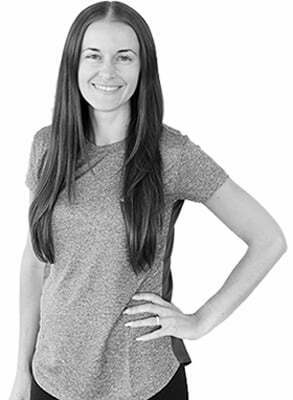
Click HERE to book an appointment with Dr. Corina Kibsey, ND today.
- Oakville Naturopath – Triangle Physiotherapy Oakville
- Naturopath in Mississauga – Triangle Physiotherapy Mississauga
- Downtown Naturopath – Triangle Physiotherapy King West
- Mississauga Naturopath – Triangle Physiotherapy Erin Mills
Running can sometimes lead to unexpected issues, such as muscle imbalances or injuries, that require professional care. If you’re a runner looking for expert physiotherapy services to prevent or treat running-related injuries, consider clinics in physiotherapy Etobicoke, Oakville, North York, Toronto, Lawrence Park, Queens Quay, Erin Mills, Mississauga, and Liberty Village. These clinics offer specialized care and personalized treatment plans to help you stay injury-free and perform at your best.
Running in the winter can be a great way to stay active, but it does require some adjustments to ensure safety and comfort in cold and potentially icy conditions.
Here are some tips for running in the winter:
1. Dress in Layers:
- Base Layer: Moisture-wicking fabric to keep sweat away from your skin.
- Insulating Layer: A warm layer to retain body heat. This can be fleece or a synthetic insulating material.
- Outer Layer: A waterproof and windproof jacket to protect against the elements.
2. Protect Extremities:
- Head: Wear a hat or headband to retain heat. A beanie that covers your ears can be especially helpful.
- Hands: Use insulated, waterproof gloves or mittens.
- Feet: Wear moisture-wicking socks and consider using gaiters to keep snow out of your shoes.
3. Choose the Right Footwear:
- Opt for running shoes with good traction to prevent slipping on ice or snow.
- You can also use traction devices that slip over your shoes for added grip.
4. Stay Visible:
- Winter days are often darker, so wear reflective gear or bright colors to ensure you’re visible to drivers.
5. Warm-Up Inside:
- Warm up your muscles indoors before heading out to minimize the shock of the cold on your body.
6. Plan Your Route:
- Stick to well-lit, well-traveled paths to ensure your safety.
- Avoid areas with heavy snow or ice accumulation.
7. Hydrate:
- Even in cold weather, it’s important to stay hydrated. Cold air can be dry, and you can still lose fluids through sweat.
8. Adjust Your Pace:
- Cold air can make breathing more challenging, so adjust your pace accordingly.
9. Listen to Your Body:
- If conditions are extreme, consider shortening your run or opting for an indoor workout.
10. Post-Run Care:
- Change out of wet clothes quickly to avoid getting chilled.
- Warm up gradually, and consider a hot shower to raise your body temperature.
11. Be Cautious of Ice:
- Watch for icy patches and adjust your stride to reduce the risk of slipping.
- If conditions are icy, consider using traction devices for your shoes.
12. Stay Informed About the Weather:
- Check the weather forecast before heading out, and be aware of changing conditions.
By following these tips, you can make your winter runs more enjoyable and safer. Always prioritize safety and listen to your body, adjusting your routine as needed based on the conditions.
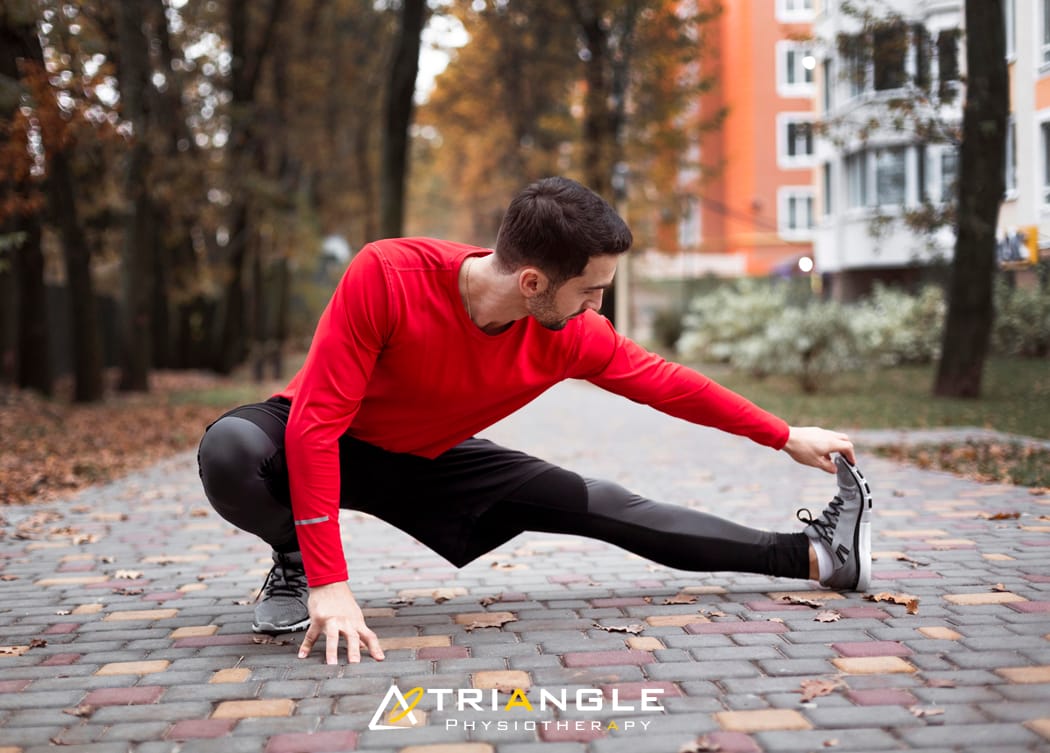
How do I book an appointment for a Running Assessment near me?
Click HERE to book an appointment with a physiotherapist or chiropractor at one of our eight locations.
- Physiotherapy Etobicoke – Triangle Physiotherapy Etobicoke
- Oakville Physiotherapy Clinic – Triangle Physiotherapy Oakville
- Physiotherapy North York – Triangle Physiotherapy North York
- Mississauga Physiotherapy Clinics – Triangle Physiotherapy Mississauga
- Downtown Physiotherapy Clinics – Triangle Physiotherapy King West
- Uptown Physiotherapy Clinics – Triangle Physiotherapy Lawrence Park
- Physiotherapy Clinic Downtown Toronto – Triangle Physiotherapy Queens Quay
- Physiotherapy Clinics Mississauga – Triangle Physiotherapy Erin Mills
“Running in the winter requires special considerations to stay safe and injury-free. Triangle Physiotherapy offers expert services across the GTA, including Physiotherapy in Etobicoke, Oakville, North York, Toronto, Lawrence Park, Queens Quay, Erin Mills, Mississauga, and Liberty Village. Our skilled physiotherapists can help you maintain your running routine throughout the winter with personalized advice and injury prevention strategies.”
A running assessment is a process in which an individual’s running form, biomechanics, and overall performance are evaluated by a physiotherapist. The goal of a running assessment is to identify any issues or inefficiencies in the individual’s running technique that may contribute to discomfort, pain, or decreased performance.
What are the components of a Running Assessment?
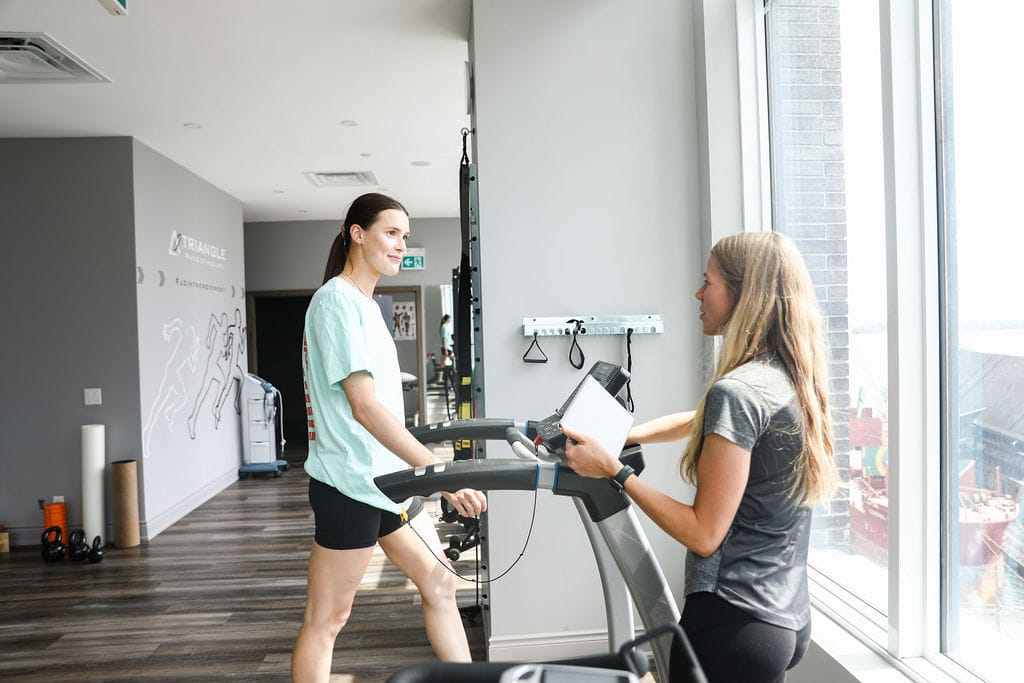
Key components of a running assessment may include:
- Gait Analysis: Observing the way an individual walks or runs to assess their biomechanics, stride length, foot strike pattern, and overall form.
- Footwear Analysis: Evaluating the type and condition of the running shoes worn by the individual to ensure they provide proper support and are suitable for their running style.
- Muscle and Joint Assessment: Checking for any muscle imbalances, weaknesses, or joint restrictions that may affect running mechanics.
- Injury History: Review the individual’s history of injuries, if any, to identify patterns or recurring issues that may be related to running technique.
- Functional Movement Assessment: Assessing the individual’s flexibility, strength, and stability, especially in areas relevant to running, such as the hips, knees, and ankles.
- Running on a Treadmill or Track: The individual may be observed while running on a treadmill or a track to get a real-time assessment of their running mechanics.
- Discussion of Training Goals: Understanding the individual’s running goals, whether they are training for a specific event, improving performance, or addressing pain or discomfort.
I am a novice runner, can I still do a running assessment?
Absolutely. As a novice runner, it is very important to learn the proper technique so that you don’t injure yourself. The physiotherapist will assess you and help you with technique, shoe selection, and a training plan if you want to run a marathon.
Where can I find a physiotherapist who does Running Assessments in Toronto?
We have 8 locations with physiotherapists to help you run better.
Click HERE to book an appointment with a physiotherapist at one of our eight locations.
- Physiotherapy Etobicoke – Triangle Physiotherapy Etobicoke
- Oakville Physiotherapy Clinic – Triangle Physiotherapy Oakville
- Physiotherapy North York – Triangle Physiotherapy North York
- Mississauga Physiotherapy Clinics – Triangle Physiotherapy Mississauga
- Downtown Physiotherapy Clinics – Triangle Physiotherapy King West
- Uptown Physiotherapy Clinics – Triangle Physiotherapy Lawrence Park
- Physiotherapy Clinic Downtown Toronto – Triangle Physiotherapy Queens Quay
- Physiotherapy Clinics Mississauga – Triangle Physiotherapy Erin Mills
A running assessment can help identify and correct biomechanical issues to improve performance and prevent injuries. For a comprehensive running assessment and personalized care, consider physiotherapy in Etobicoke, Oakville, North York, Toronto, Lawrence Park, Queens Quay, Erin Mills, Mississauga, or Liberty Village. Expert physiotherapists in these locations can help you optimize your running form and stay injury-free.
Preparing for a marathon requires more than just physical training. It also involves strategic planning and making the right choices to ensure you reach the starting line in peak condition. While proper training and nutrition are crucial, the day before the marathon is equally important for maximizing your performance. In this article, we will explore 10 essential activities to help you make the most of your day before the marathon.
1. Relax and Rest
The day before a marathon, it’s crucial to prioritize rest and relaxation. Engage in activities that promote calmness and allow your body to recover from training. Take a gentle walk, read a book, or indulge in a soothing bath. Remember, a rested body is a prepared body.
2. Focus on Hydration
Hydration is key to maintaining optimal performance during a marathon. Begin increasing your fluid intake the day before the race, but avoid excessive consumption. Sip water, electrolyte-rich drinks, and herbal teas throughout the day. Adequate hydration will help prevent muscle cramps and fatigue.
3. Light Exercise and Stretching
Engage in light exercise and stretching routines to loosen your muscles and improve flexibility. However, avoid intense workouts that could potentially tire you out or cause muscle soreness. Gentle stretches and mobility exercises will help keep your body limber and prevent injuries.
4. Plan Your Nutrition
Proper nutrition plays a vital role in marathon success. Consume a well-balanced meal rich in carbohydrates, lean proteins, and healthy fats. Opt for easily digestible foods such as whole grains, fruits, vegetables, and lean proteins. Avoid experimenting with new foods or overeating, as it may lead to discomfort on race day.
5. Physiotherapy Session
Consider scheduling a physiotherapy session on the day before your marathon. Physiotherapists can assess your body’s condition, identify any muscular imbalances or areas of concern, and provide appropriate treatments. They may use techniques like massage, stretching, or taping to enhance your performance and reduce the risk of injury.
6. Organize Your Gear
Take time to organize all the essential items you’ll need for the race. Lay out your race attire, running shoes, socks, GPS watch, and any other accessories. Double-check that you have everything you’ll need, such as race bibs, safety pins, energy gels, and hydration packs. Being well-prepared will help alleviate stress on race day.
7. Visualize Success
Visualization is a powerful tool to mentally prepare for a marathon. Spend some time visualizing yourself crossing the finish line, feeling strong and accomplished. Envision overcoming challenges and maintaining a steady pace. This mental exercise can boost confidence, reduce anxiety, and enhance your overall performance.
8. Plan Your Race Day Logistics
Familiarize yourself with the race route, including the start and finish locations, aid stations, and potential landmarks. Plan your transportation to the race venue, parking, and any logistical considerations. Knowing the details in advance will help you feel more relaxed and focused on race day.
9. Get Quality Sleep
A good night’s sleep is essential to perform your best. Aim for seven to nine hours of uninterrupted sleep the night before the marathon. Create a sleep-friendly environment by keeping your bedroom cool, dark, and quiet. Establish a pre-sleep routine to signal your body that it’s time to wind down and rest.
10. Stay Positive and Trust Your Training
Finally, stay positive and have faith in your training. Remind yourself of the hard work, dedication, and sacrifices you’ve made to reach this point. Trust in your training program and believe in your abilities. Positive thoughts will help you stay focused, motivated, and perform at your best.
The day before a marathon is a critical time to fine-tune your physical and mental preparations. Prioritize relaxation, hydration, light exercise, and physiotherapy to ensure your body is ready for the race. Plan your nutrition, organize your gear, and visualize success to boost confidence. Adequate rest and quality sleep will leave you refreshed for the marathon day. Embrace positivity, trust your training, and enjoy the incredible journey of completing a marathon. Good luck!
Note: Physiotherapy plays a significant role in optimizing marathon performance by addressing any underlying physical issues, promoting muscle recovery, and enhancing overall well-being.
Click HERE to book an appointment with a physiotherapist at one of our eight locations.
- Physiotherapy Etobicoke – Triangle Physiotherapy Etobicoke
- Oakville Physiotherapy Clinic – Triangle Physiotherapy Oakville
- Physiotherapy North York – Triangle Physiotherapy North York
- Mississauga Physiotherapy Clinics – Triangle Physiotherapy Mississauga
- Downtown Physiotherapy Clinics – Triangle Physiotherapy King West
- Uptown Physiotherapy Clinics – Triangle Physiotherapy Lawrence Park
- Physiotherapy Clinic Downtown Toronto – Triangle Physiotherapy Queens Quay
- Physiotherapy Clinics Mississauga – Triangle Physiotherapy Erin Mills
“Preparing for a marathon involves more than just training; it requires careful planning and attention to your physical health. Triangle Physiotherapy offers expert services across the GTA, including Physiotherapy in Etobicoke, Oakville, North York, Toronto, Lawrence Park, Queens Quay, Erin Mills, Mississauga, and Liberty Village. Our experienced physiotherapists can help you prepare for your marathon with personalized advice and injury prevention strategies.”
What are orthotics?
Orthotics are custom made inserts that are worn inside your shoe to control abnormal foot function.
Orthotics solve a number of biomechanically related problems, for example, ankle and knee pain, pelvis, hip, spinal pain. This is achieved by preventing misalignment of the foot, which significantly alters the way in which the bones move within their joints.
Orthotics work for the feet the same way prescription glasses work for the eyes.
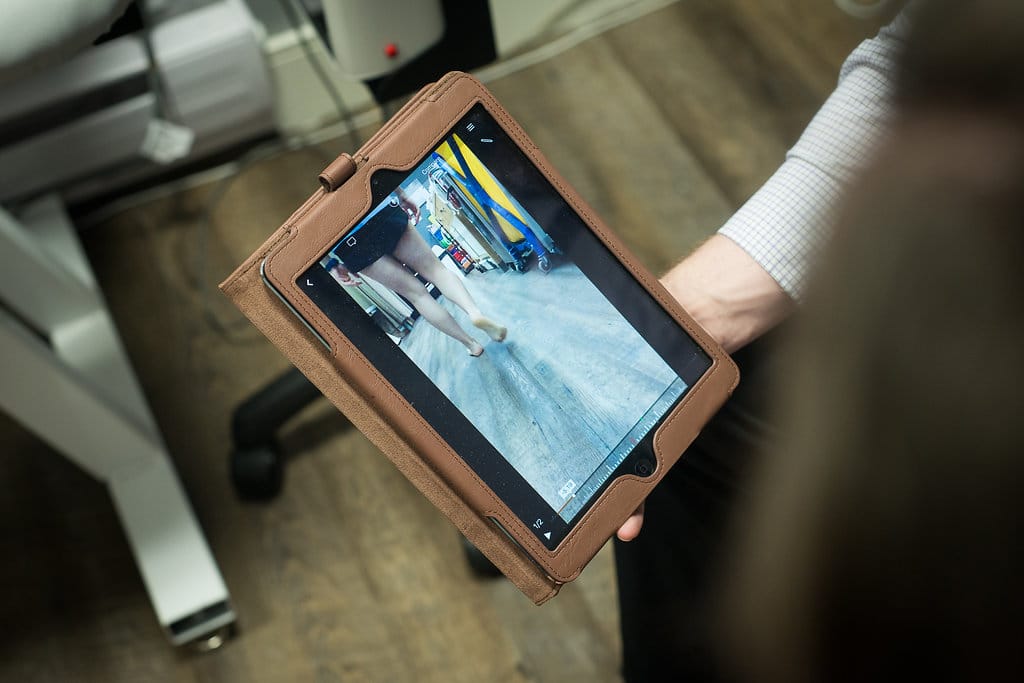
Who can benefit from orthotics?
Custom orthotics can be used for all ages and for a variety of activities and can be made to fit any type of shoe.
Where can I get the best custom orthotics?
The best custom orthotics can be purchased from a clinic where a chiropodist or qualified health professional conducts an assessment and a 3D scan of your feet to determine the best orthotics for you. The 3D Scan is then sent to a lab where the scan is used to manufacture your orthotics.
Triangle Physiotherapy has qualified health practitioners that can assess you and recommend the best custom orthotics for you.
How can Orthotics correct foot conditions?
The best custom orthotics can:
- Help balance pressure placed on the feet by redistributing the weight appropriately
- Help stabilize the heel
- Support the arch of the feet
- Provide cushioning to delicate and inflamed areas of the feet that arise from too much walking, jogging, running, etc.
What is a knee brace and how can it help me?
A knee brace can help support and stabilize an unstable knee due to injury or osteoarthritis. The best knee brace will offer the support you need in order to balance and evenly distribute your weight in order to have a more comfortable walk or run.
What conditions can a knee brace help with?
Whether it’s a knee sprain, arthritis, torn ACL, runner’s knee, knee instabilities or knee discomfort, the best knee braces help support and manage pain.
When should I start wearing a knee brace?
Once you start experiencing knee pain or discomfort or find that the knee is unstable while walking or running or after you have had knee surgery , book an appointment with one of our health practitioners who can assess you and recommend the best knee brace for you.
“Custom orthotics and knee braces can significantly improve mobility and reduce pain. Triangle Physiotherapy offers expert services across the GTA, including Physiotherapy in Etobicoke, Oakville, North York, Toronto, Lawrence Park, Queens Quay, Erin Mills, Mississauga, and Liberty Village. Our experienced team can help you find the best solutions to support your foot and knee health, ensuring a personalized approach to your treatment.”
Piriformis Syndrome is a neuromuscular disorder that is caused when the piriformis muscle compresses the sciatic nerve. The piriformis muscle is a flat, band-like muscle located in the buttocks near the top of the hip joint. This muscle is important in lower body movement because it stabilizes the hip joint and lifts and rotates the thigh away from the body. This enables us to walk, shift our weight from one foot to another, and maintain balance. It is also used in sports that involve lifting and rotating the thighs, in short, in almost every motion of the hips and legs.
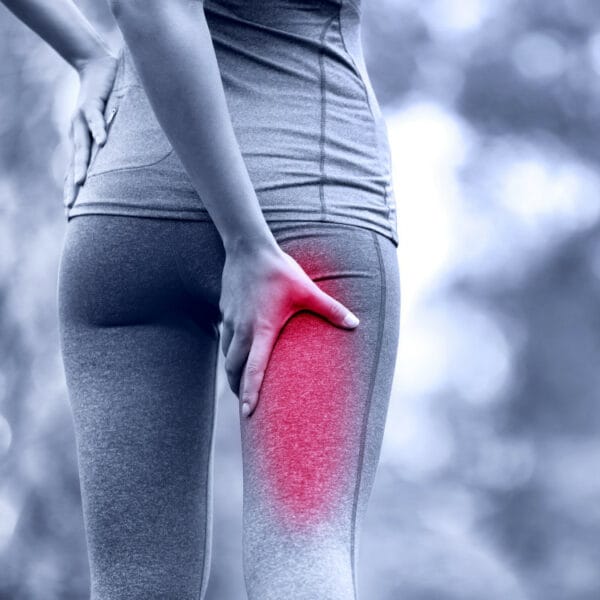
Causes of Piriformis Syndrome
The exact causes of piriformis syndrome are unknown. Suspected causes include:
- Muscle spasm in the piriformis muscle, either because of irritation in the piriformis muscle itself, or irritation of a nearby structure such as the sacroiliac joint or hip
- Tightening of the muscle, in response to injury or spasm
- Swelling of the piriformis muscle, due to injury or spasm
- Bleeding in the area of the piriformis muscle.
Also read, Best Mississauga Physiotherapy Clinic
Symptoms of Piriformis Syndrome
Most commonly, patients describe acute tenderness in the buttock and sciatica-like pain down the back of the thigh, calf and foot. Typical piriformis syndrome symptoms may include:
- A dull ache in the buttock
- Pain down the back of the thigh, calf and foot (sciatica)
- Pain when walking up stairs or inclines
- Increased pain after prolonged sitting
- Reduced range of motion of the hip joint
- Symptoms of piriformis syndrome often become worse after prolonged sitting, walking or running, and may feel better after lying down on the back.
Also Read, Triangle Physiotherapy Clinic at Oakville
Physiotherapy Treatment for Piriformis Syndrome
Ice Packs and Ice Massage
At the onset of pain, lie in a comfortable position on the stomach and place an ice pack on the painful area for approximately 20 minutes. Repeat as needed every 2 to 4 hours.
It may be more helpful to combine a gentle massage with the ice. Lie on the stomach and have someone gently massage the painful area with a large ice cube. If ice is applied directly to the skin (instead of a cold pack), limit it to 8 to 10 minutes to avoid an ice burn.
Heat Therapy
Some people find it helpful to alternate cold with heat. If using a heating pad, lie on the stomach and place the heating pad on the painful area for up to 20 minutes. Be sure to avoid falling asleep on a heating pad, as this may lead to skin burns.
Electrotherapy
The application of electrical stimulation to the buttock with a transcutaneous electrical nerve stimulation (TENS) unit or interferential current stimulator (IFC) can help to block pain and reduce muscle spasm related to piriformis syndrome.
Also Read, Best Physiotherapists in Etobicoke
Piriformis stretches
There are a number of ways to stretch one’s piriformis muscle. Two simple ways include:
- Lie on the floor with the legs flat. Raise the affected leg and place that foot on the floor outside the opposite knee. Pull the knee of the bent leg directly across the midline of the body using the opposite hand or a towel, if needed, until stretch is felt. Do not force knee beyond stretch or to the floor. Hold stretch for 30 seconds, then slowly return to starting position. Aim to complete a set of three stretches.
2. Lie on the floor with the affected leg crossed over the other leg at the knees and both legs bent. Gently pull the lower knee up towards the shoulder on the same side of the body until stretch is felt. Hold stretch for 30 seconds, then slowly return to starting position. Aim to complete a set of three stretches.
Ref: https://en.wikipedia.org/wiki/Piriformis_muscle
http://www.spine-health.com/conditions/sciatica/symptoms-and-diagnosis-piriformis-syndrome.
Piriformis syndrome can cause significant discomfort and requires targeted physiotherapy to alleviate pain, improve mobility, and prevent further issues. If you are looking for professional physiotherapy services to manage piriformis syndrome, there are clinics in physiotherapy Etobicoke, Oakville, North York, Toronto, Lawrence Park, Queens Quay, Erin Mills, Mississauga, and Liberty Village. These clinics offer specialized care and personalized treatment plans to help you recover and regain full mobility.

Some common winter sports injuries:
1) Separated shoulders
2) Knee Sprains
3) Torn ligaments
4) Pulled muscles
5) Fractures
Also read, Etobicoke Physiotherapy Clinic
Exercising alone isn’t enough to achieve good health if you’ve already had an injury. It’s important to address injuries before they worsen and become more difficult to manage. At Triangle Physiotherapy, we promote active treatment programs that emphasize exercise to encourage client participation & independence.
Overcoming winter aches and pains:
Sometimes, a change in the weather could cause dormant aches to become more apparent. Joint pain can occur anytime throughout the year, but in the cold and wet months of the winter, you may find it harder to cope with.
A visit to a physiotherapist can help to keep you moving forward in a pain-free manner.
- Avoid excess twisting and forward bending. Bend the knees and keep the back as straight as possible when you are lifting.
- Make sure that you are using proper techniques and good body mechanics to help you avoid shoulder and low back injuries can be avoided.
- Don’t let the cold weather put you off – bundle up and be careful in wet or icy conditions.
- Exercising regularly will help reduce pain within your joints and help prevent other health issues.
- Also, ensure that you don’t overdo exercise if you are new in the sphere. Make sure you warm up with a brisk walk or gentle jogging.
Also read, Physiotherapy Treatment in Oakville
When our body is cold, it restricts the amount of blood it sends to our extremities, like our hands and feet, so that it can focus on supplying vital organs (like the heart and lungs) with blood. This means that we lose less heat from blood circulating near the surface of the skin, and also means that the joints get less blood. This can cause delayed healing and an increased insensitivity to pain.
To answer all of your queries in detail, we, at Triangle Physiotherapy thoroughly assess you and create customized treatment programs that address each individual’s needs. There are many people who feel depressed during the winter months, which can increase their sensitivity to pain. Don’t let your passion for living a pain-free life take a back seat during the winter season!
Triangle Physiotherapy is coming up with a new health campaign called #JoinTheMovement. By participating in this movement, you will notice a significant difference in your overall health awareness and awareness of what a Physiotherapist can do for you.
So, what are you waiting for? For more information on our services, visit our pages on facebook, and instagram
Winter can increase the risk of slips and falls, making physiotherapy essential for recovery and injury prevention. If you are looking for expert physiotherapy services, there are reputable clinics in physiotherapy Etobicoke, Oakville, North York, Toronto, Lawrence Park, Queens Quay, Erin Mills, Mississauga, and Liberty Village. These clinics provide specialized care and tailored treatment plans to help you stay safe and active throughout the winter season.
